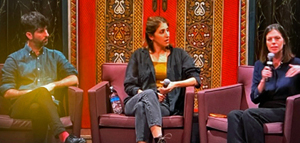Tree Equity for Climate, Health and Social Justice
I think that I shall never see
A poem as lovely as a tree.
When American poet Joyce Kilmer wrote these words in 1913 as a tribute to nature, he didn’t presume that over a century later the importance of a tree would extend far beyond its beauty.
Many people think of forests in terms of their eradication in the Amazon, or connected to wildfire destruction. That’s only part of the story.
The American Forest organization, founded in 1875, has created a tool that brings attention to trees as fighters in the war against environmental injustice. Released in late June, the Tree Equity Score introduces the term Tree Equity to underscore how American city dwellers are unequally impacted by “urban heat islands.” It is an interactive tool that environmental activists, elected officials, and parents can use to see if where they live measures up.
The absence of green space in urban areas stems from redlining instituted during the 1930s. Real estate “planning” left low-income, immigrant, and minority communities with an oversaturation of concrete and minimal grass and shrubbery.
American Forest has compiled a report (with Dr. David Nowak of the U.S. Forest Service) which states: “31.4 million trees per year need to be planted in urban locations” to ameliorate the impacts of climate change.
The format employs eight categories to develop a snapshot of each area and to evaluate how it measures up in terms of parity.
- Population density
- Income
- Employment
- Health
- Existing Tree Canopy
- Surface Temperature
- Race
- Age
Using a scale from zero to 100, an analysis emerges that reflects how economics and race are the key factors in developing and decision-making on who gets the green. The information is culled from 150,000 neighborhoods in approximately 500 urban areas, all of which have over 50,000 residents. Unsurprisingly, 18 percent of homes in these hot spots are below the poverty line. This physical siting, combined with the inability to afford air conditioning, the money to run it without economic concerns, and pre-existing health issues, puts these sectors at greater risk of heat-related illnesses and fatalities.
American cities with the most benefit to gain include New York, Portland, Chicago, Houston, Los Angeles, Detroit, and Philadelphia.
Looking at the Washington, D.C. Metro area, I compared Georgetown to the Census Block that ranked 450th of the 450 blockgroups in D.C. Georgetown had a score of 93. It had 1 percent unemployment, 24 percent people of color, and 32 percent canopy cover. In the lowest rated blockgroup, the score was 52. People of color comprised 100 percent of the population and had 95 percent of people in poverty.
So, beyond the stats, why is this so important?
Trees are a tangible way to protect people from the harms of extreme heat and pollution. Their leaves can catch particulate matter while carbon sequestration occurs in their branches and trunks. Healthy trees can aid in preventing the occurrence of acute respiratory symptoms. Their presence can lower air temperature by 7 to 10 degrees.
Heat is the top killer of people in America, higher than other extreme weather events like hurricanes. 12,000 people die from heat annually.
How Trees Help
The cooling that comes from trees reduces electricity demand. The public runs their air conditioning less frequently, which expends less energy and helps to reduce potential power failures. They also absorb excess stormwater and are part of the “wildlife cycle” functioning as homes and nourishment to various animal species. Reports show that standing trees have prevented about 1,200 heat-related deaths.
Poor neighborhoods have 25 percent less tree canopy. Yet, a study showed that in Chicago, green growth near a building in public housing had 52 percent fewer crimes. The presence of trees has improved mental and physical health as well.
Without a solid plan for planting, deaths from heat extremes in 2031-2010 could reach levels 57 percent higher than they were in 1971-2000.
Why do American cities lose about 36 million trees per year in urban settings?
Reasons range from insect infestation to heavy storms. During the winter, excessive salt on the pavement impacts roots systems. Healthy trees, cut down due to construction or repairs, are a significant loss.
Rep. Abigail Spanberger (D-VA) and Sen. Cory Booker (D-NJ) understand the premise. In April, they reintroduced the Climate Stewardship Act. It was a clear nod to the report about “global tree restoration potential” as one of the most effective strategies for climate change mitigation.
Jad Daley, the CEO and President of American Forests, has pointed to the connection between “environmental restoration” and green jobs “economic recovery.” He has emphasized the potential creation of “hundreds of thousands of jobs across our cities and rural communities.” The organization’s project Community ReLeaf is working with partner cities to make this concept a reality.
Public support is important, but a strong American Jobs Plan that provides infrastructure that recognizes and implements Tree Equity is essential.
This article originally appeared on Moms Clean Airforce





